The south of Scotland gets horrendously short shrift by the vast majority of visitors. Even Scots tend to go north, perhaps in an attempt to avoid the English pouring over the border (history repeats itself?). I am, of course, kidding – about the English, that is. The south is summarily dismissed by all but the most time-rich and curious travelers. More’s the pity, for, as the scene of many long-remembered battles for Scottish Independence, the south is littered with the ruins of stout fortifications and victimized places of worship. For a history buff like me, the south ranks very highly indeed.
By my last count, I’ve taken the opportunity to visit more than 50 castles across the breadth of Scotland of every type you can imagine, from stately tower houses to tumble-down ruins. Much like distilleries, each castle is a unique expression of the time and its builders, whose fascinating story weaves together geography, culture, and the march of historical events. This is an endless quest, to lay eyes upon all of Scotland’s castles, and for that I am thankful, but there are times when I’m forced to stop in my tracks and ponder if I’ve reached the apex of this journey.
Times like this one, as I stood on the grassy embankment beyond the moat and looked upon Caerlaverock Castle.
There is no other castle in Scotland like Caerlaverock. To get there, you need only drive seven miles south of Dumfries on the east side of the River Nith. If you drive down the west side of the river you will find yourself at Sweetheart Abbey, which is also worth a visit (but not the subject of this post). The castle’s unique features are impossible to miss on first glance as an actual water-filled moat surrounds its triangular bastion. It’s not clear why the Maxwells, who received this land via royal grant of King Alexander II in 1220, built the castle in this shape, but it is certainly pleasing to the eye. It may have been one of the first castles in Scotland to be built of stone.
However, it was not the first castle built on this land. A short way into the marshy forest behind the current castle lie the foundations of an older, square castle built by Sir John Maxwell, Warden of the West March. The sea level back then was higher, and the old castle would have stood at the head of a tidal inlet. The original castle was abandoned after just 50 years because the wet ground beneath the structure had begun to cause parts of the castle to collapse.
It’s hard to conceive of a family that had lived in a castle for over 350 years in the year 1635, but that is the truth of the Maxwells. The Maxwells switched sides between Robert the Bruce and John Balliol – though always fought against the English – during the multiple wars of independence that also saw Caerlaverock partly dismantled for strategic reasons more than once. Each time the castle was rebuilt by the canny Maxwells, who always retained possession.
Caerlaverock saw more action in the 1500s when the Catholic Maxwells supported Mary, Queen of Scots and fought against besieging Protestant English. While the Maxwell’s survived that onslaught, they would not fare so well a hundred years later when Caerlaverock’s guardianship of one of the primary roads into Scotland ended in 1640. A Protestant Covenanter army besieged the castle for 13 weeks, forcing the defenders to surrender beautiful, pink Caerlaverock to the Covenanters’ whims. They demolished the south wall and tower, and the castle was never repaired.
For modern visitors like me, I almost feel lucky the Covenanters brought down that south wall, for its conspicuous absence presents an incredible view of the castle interior from the embankment across the moat. As much as Caerlaverock is ruined, the untouched parts are remarkably sturdy, having borne the years with grace. You can walk in the shadowy ranges and climb stairs to higher parts of the castle where new and interesting views abound. This is a castle that feels very ancient and strangely exotic, as if the architect might have possessed knowledge from beyond Britain’s shores.
I was sad to see that the replica trebuchet I had seen in 2006 was no longer on the grounds. Apparently the weather damaged the wood to an unsalvageable state. Still, Historic Scotland does another wonderful job framing the history of Caerlaverock Castle with informative displays in the nearby outbuildings. Touring the interior of the castle is an immersive experience, but the best views of the castle come to those who take the time to walk the embankment surrounding the moat. You’re just far enough away from the castle to wrap your head around its size and shape, and it is a wondrous sight indeed.
Paths in the nearby woods link Caerlaverock Castle to the Caerlaverock National Nature Reserve and Wetlands Centre, and you’d be wise to spend some time exploring this area, too, if for nothing else than incredible views of Caerlaverock Castle (like the image at the very top of this post).
I can’t speak highly enough of Caerlaverock. As far as castles that yield immersive, teleporting, time-traveling experiences, perhaps only Dunnottar Castle stands equal. Caerlaverock is an alluring ruin, its pale red stones crafted into a stunning, triangular bulwark standing within a flooded moat that evokes the age of its origin. If there’s one site you have to see in Dumfries & Galloway, Caerlaverock Castle is it.
Disclosure: Historic Scotland provided me with a complimentary visit. All thoughts and opinions expressed here are my own.

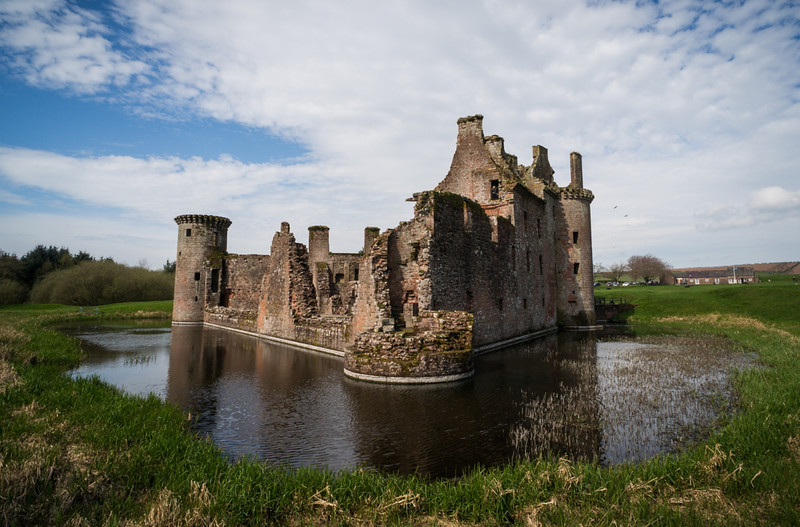
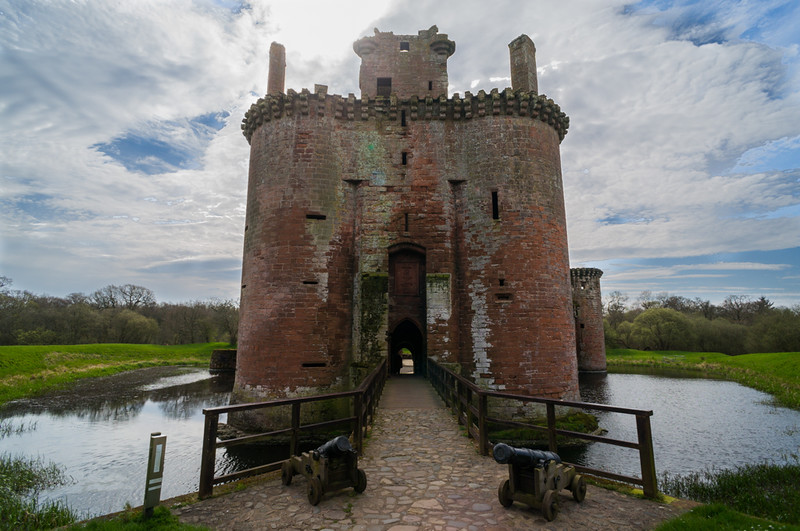
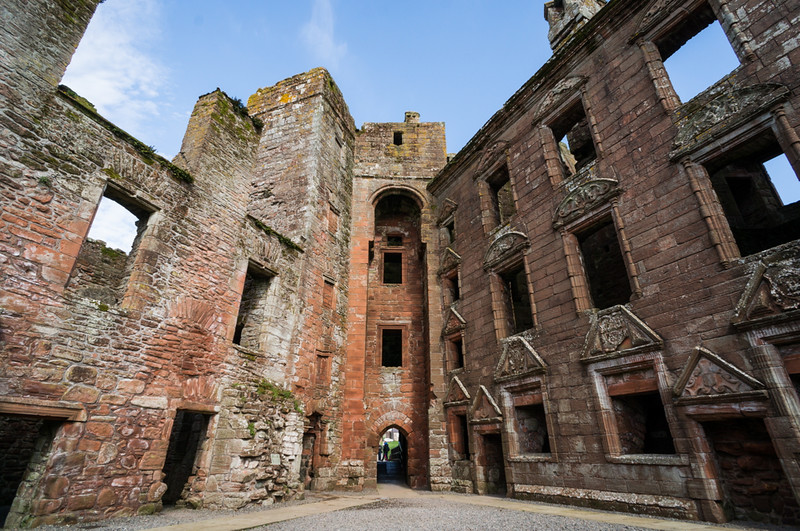
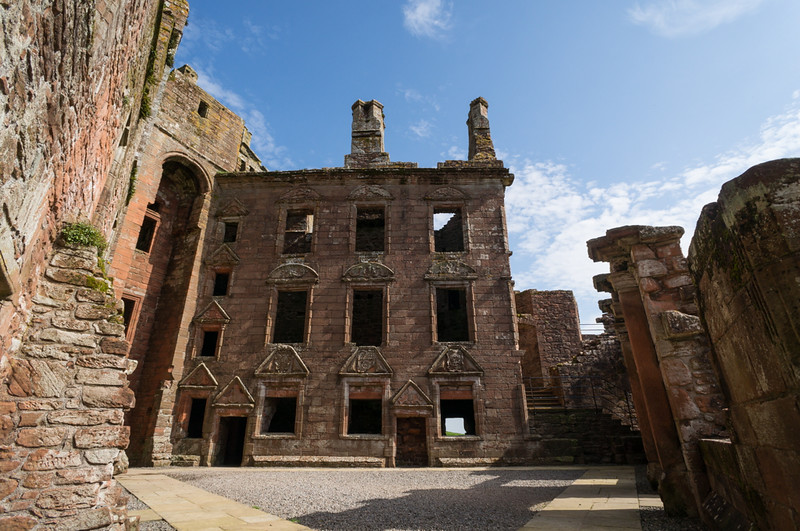
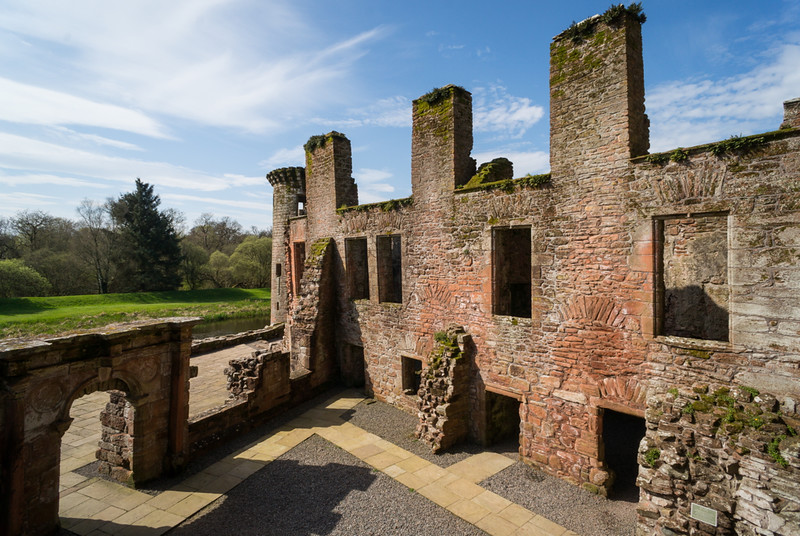
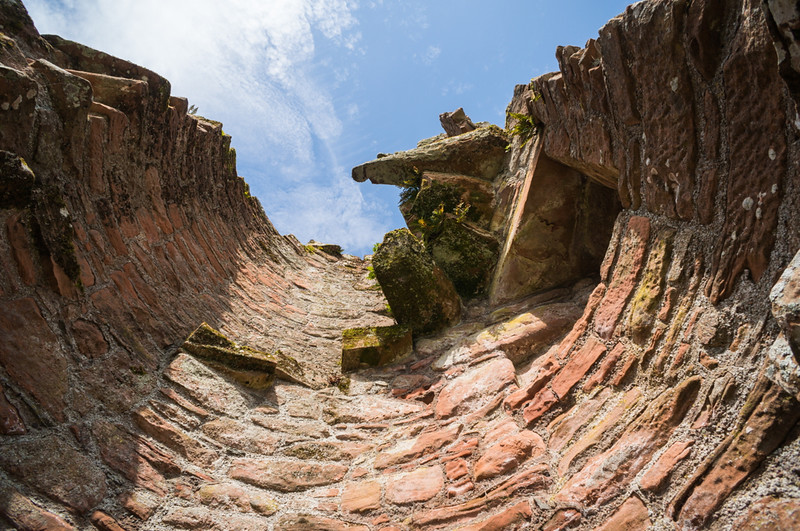
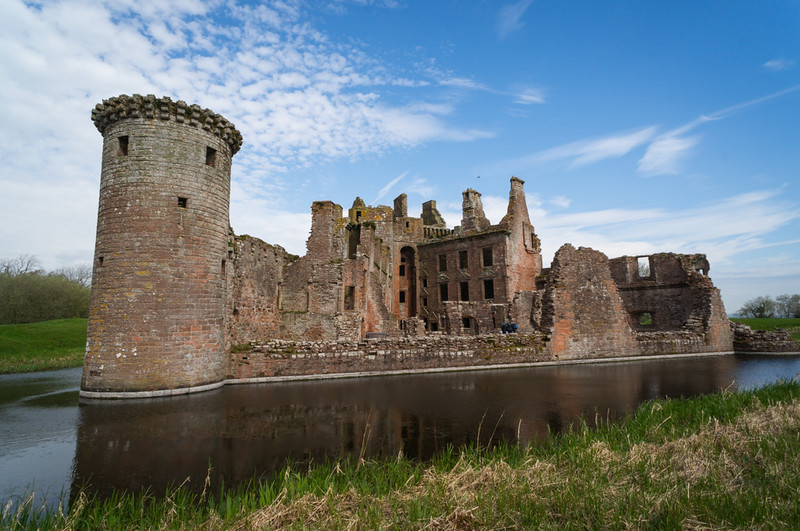
[…] had visited only a handful of castles when I arrived to Caerlaverock Castle in 2006, but even then I knew it was special. Situated just south of Dumfries in the south of […]
Great report Keith, glad to get more information and images of Caerlaverock. Just curious, you mentioned the older, square castle built by Sir John Maxwell. Is it possible to walk back and look at this foundation?
Hi Dave, yes, you certainly can follow a trail back to the foundation of the old castle. I took photos but it’s really not much to look at (hence the exclusion of photos here) – just a few bricks in the ground.
Really interesting castle and decorative elements. Maybe my next trip could include some time in the south. It would be most interesting from a historical perspective.
Firstly visiting 50 castles is pretty impressive especially that you still have an interest to see more. Great pics ….Scotland is definitely an area that I’d like to do some background and traveling around.
Really interesting castle and decorative elements.
Is this castle close to the british rail? Could I take the train to a city/town close by and then take a buse or taxi? Would love to see it in person
You can take the train to Dumfries and secure additional public transport from there to Caerlaverock castle.